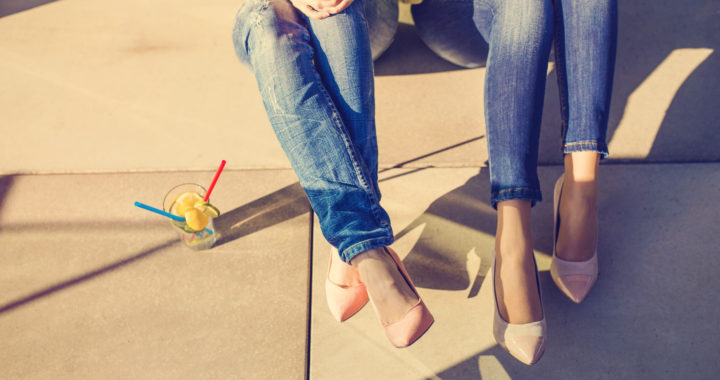It’s no secret that wearing high heels for extended periods of time can cause damage on your feet. But, we are here to talk about the day after a long day of wearing heels. Major feet pain, swelling, the inability to walk- this is the ‘High Heel Hangover.’ Everyone experiences the discomfort at different levels, it can be anywhere between a mild ache to an intense severe pain. A rule of thumb to follow is “The higher the heel and skinnier the stiletto, the worse the high heel hangover.” Just like any other type of hangover, you can take pain medication and lay in bed all day hoping that the pain goes away. Here are 6 tips to help you recover quickly from yours.
- Yoga, Stretching and Foot Exercise. Wearing high heels tightens the Achilles Tendon and calf muscle, so it is important to actively stretch out those muscles. Additionally, the shape of high heels cause the toes to buckle and contract which can result in hammer toes. An excellent way to stay stretched is yoga! There are specific poses that benefit the feet, they include: Downward-facing dog and the Virasana-Hero Pose. A runners wall stretch specifically helps the Achilles Tendon. Performing simple range-of-motion exercises of the ankles keeps the blood flowing in the feet and helps lessen the possibility of swelling in the lower leg.
- Soaking. Aside from being relaxing, Epsom salt soaks have been long used to soothe sore body parts- especially the feet. Contrary to popular belief, Epsom salt isn’t actually salt! It is a mineral of magnesium and sulfate and is easily absorbed through the skin. Using warm water to soak your feet is good, because warm water allows pores and blood vessels to expand. This makes absorbing easier.
- Pamper, Pamper, Pamper. Having improperly cut toenails or ingrown nails will cause pain after wearing high heels and other pointed toe shoes. Thick calluses also will become painful. Getting a pedicure will directly alleviate these painful areas. However, people who have diabetes should always use caution when receiving foot care and we strongly consider using a health care professional for this type of service.
- Moisturize me! It is imperative to keep the skin on your foot moisturized and hydrated. Rough areas will develop on pressure points which are no fun for anyone. Even after a measly couple of hours in high heels, dry patches of skin may appear. The ball of the foot takes the most impact when wearing heels, it also can become very callused in this area. Thick calluses can become painful, and the top of the toes can develop corns that closed toe shoes will irritate. The back of the heel is also very susceptible to develop blisters and soars if you have dry skin. The skin on the bottom of the feet is thicker then anywhere else on the body, so use a moisturizer that was made specifically for feet- it will absorb better. A good ingredient in moisturizers to look for is Jojoba oil. This is a liquid wax that comes from a seed extract. It has anti-fungal properties and also anti-inflammatory properties (bonus!) For optimal moisturizing, use after bathing or showering.
- Deep Massage. Massages are known to provide pain relief from musculoskeletal injury as well as alleviating anxiety. Therapeutic benefits of deep tissue massages go back into ancient times. Deep tissue massages also improve blood flow and alleviate lymphatic edema.
- Give your feet some rest! Wearing sneakers is the best way to give your feet so TLC. Well cushioned sneakers that offer comfort and support are the best thing for your feet. If sneakers are too painful to wear after a long day of heels, wear flip-flops to and from your destinations. Also, try to limit the amount of time your feet are exposed to high heels.
Thank you to Huffington Post for the original information. You can read more here.

